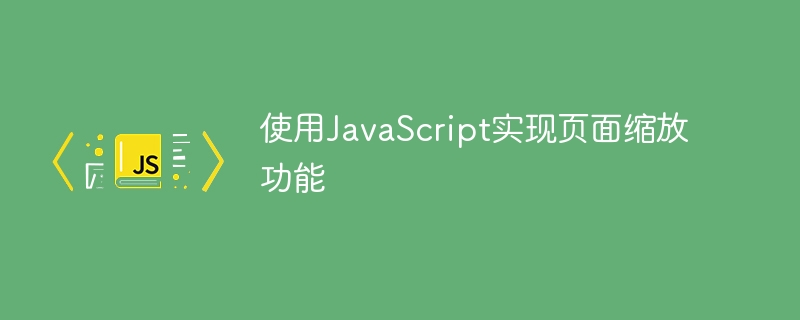

Use JavaScript to implement page zoom function
In modern web design, user experience is a crucial part. In order to adapt to the needs of users of different devices and screen sizes, we often need to scale the page. Today, we will use JavaScript to implement the page zoom function.
The scaling function of HTML is implemented in CSS by setting the viewport. However, sometimes we need to dynamically scale the page to adjust according to the user's operations. At this time, we can use JavaScript to implement the page zoom function.
First, we need to add a button to the HTML file to trigger the zoom operation of the page. The code is as follows:
1 2 |
|
Next, we need to write JavaScript code to implement the zoom function. The code is as follows:
1 2 3 4 5 6 7 8 9 10 11 12 13 14 15 16 17 18 19 20 21 22 23 |
|
In the above code, we defined four functions: getZoom is used to obtain the zoom ratio of the current page, setZoom is used to set the zoom ratio of the page, zoomIn is used to zoom in on the page, and zoomOut is used to to shrink the page. The specific implementation principle is to achieve zooming by modifying the zoom style of the page.
Finally, we only need to embed the JavaScript code into the <script> tag of the HTML file. The complete code is as follows:
1 2 3 4 5 6 7 8 9 10 11 12 13 14 15 16 17 18 19 20 21 22 23 24 25 26 27 28 29 30 31 32 33 34 35 36 37 38 39 |
|
Now, we have completed the code that uses JavaScript to implement the page zoom function. When the user clicks the zoom-in button on the page, the page will be zoomed in 0.1 times, and when the user clicks the zoom-out button, the page will be zoomed out 0.1 times. In this way, users can adjust the display effect of the page according to their own needs.
To sum up, using JavaScript to implement the page zoom function is a very simple and flexible method. Through simple code, we can implement user-friendly page zoom operations and improve the user experience of web pages. Hope this article can help you!
The above is the detailed content of Using JavaScript to implement page zoom function. For more information, please follow other related articles on the PHP Chinese website!
 The installer cannot create a new system partition solution
The installer cannot create a new system partition solution
 How to introduce external css into html
How to introduce external css into html
 Common coding methods
Common coding methods
 Characteristics of relational databases
Characteristics of relational databases
 Huobi.com
Huobi.com
 How to uninstall One-Click Restore
How to uninstall One-Click Restore
 How to increase download speed
How to increase download speed
 Introduction to screenshot shortcut keys in win8
Introduction to screenshot shortcut keys in win8
 What is Bitcoin? Is it legal? Is it a scam?
What is Bitcoin? Is it legal? Is it a scam?




